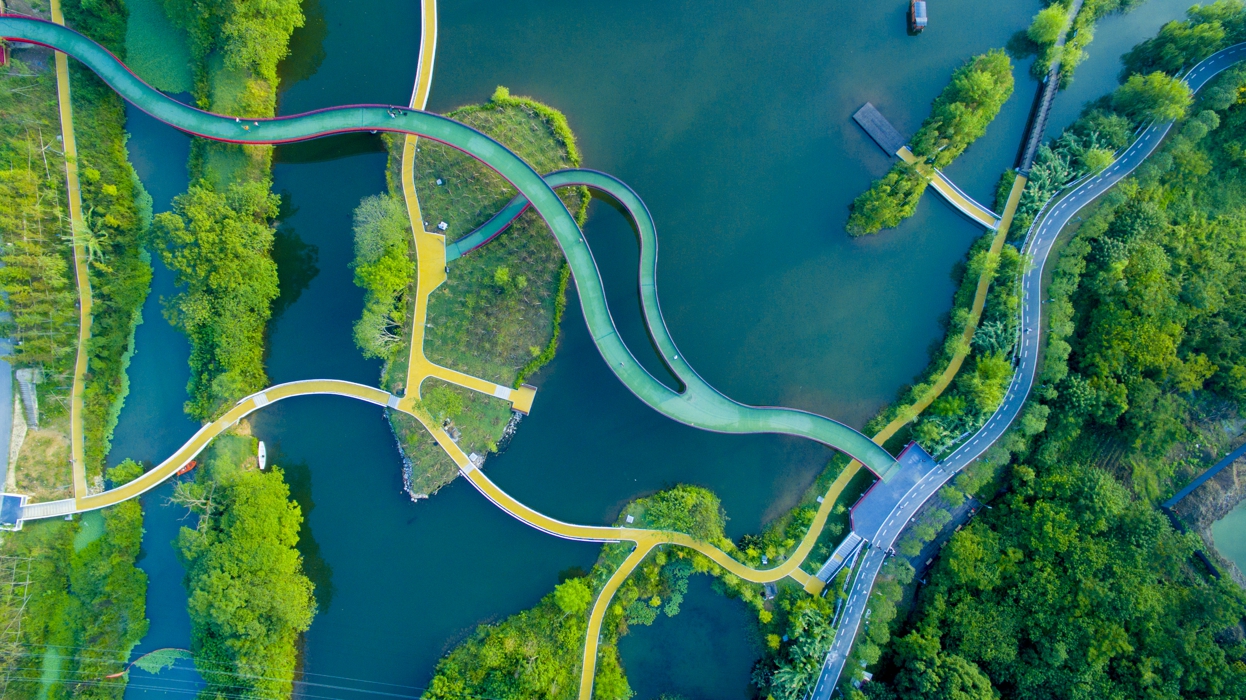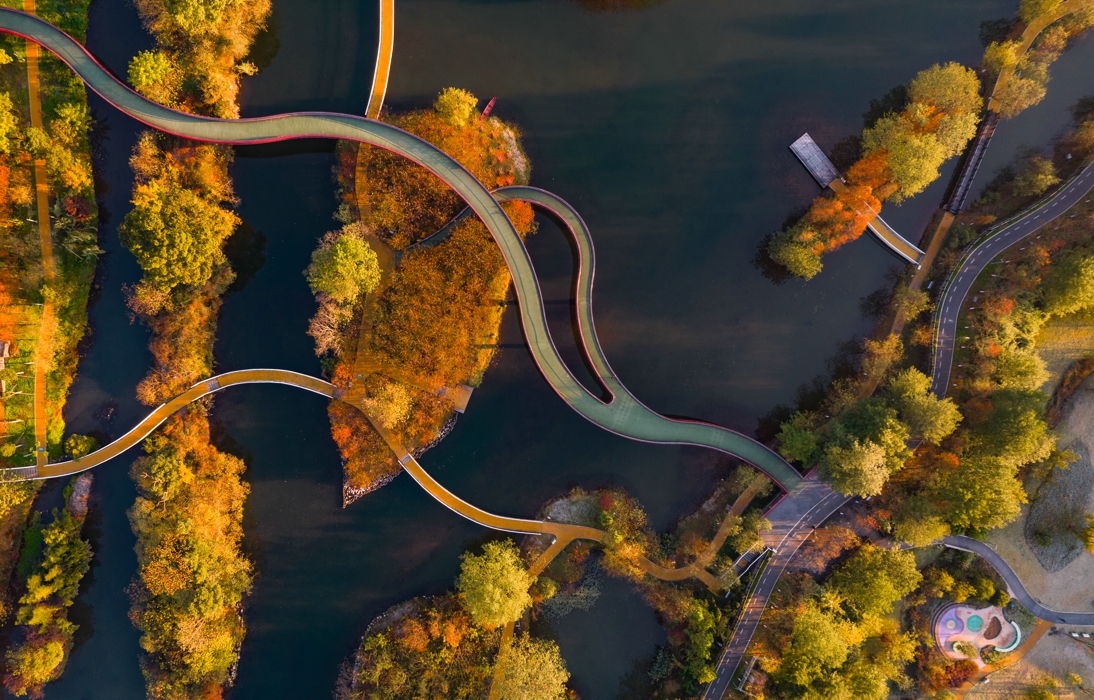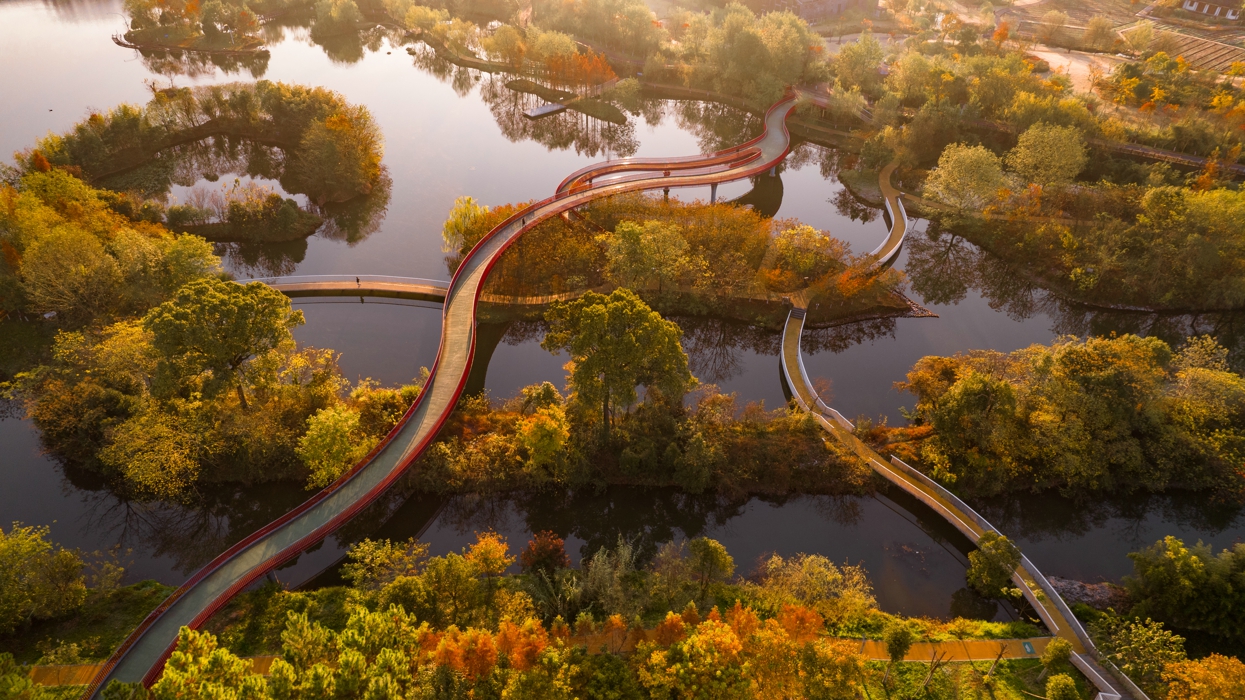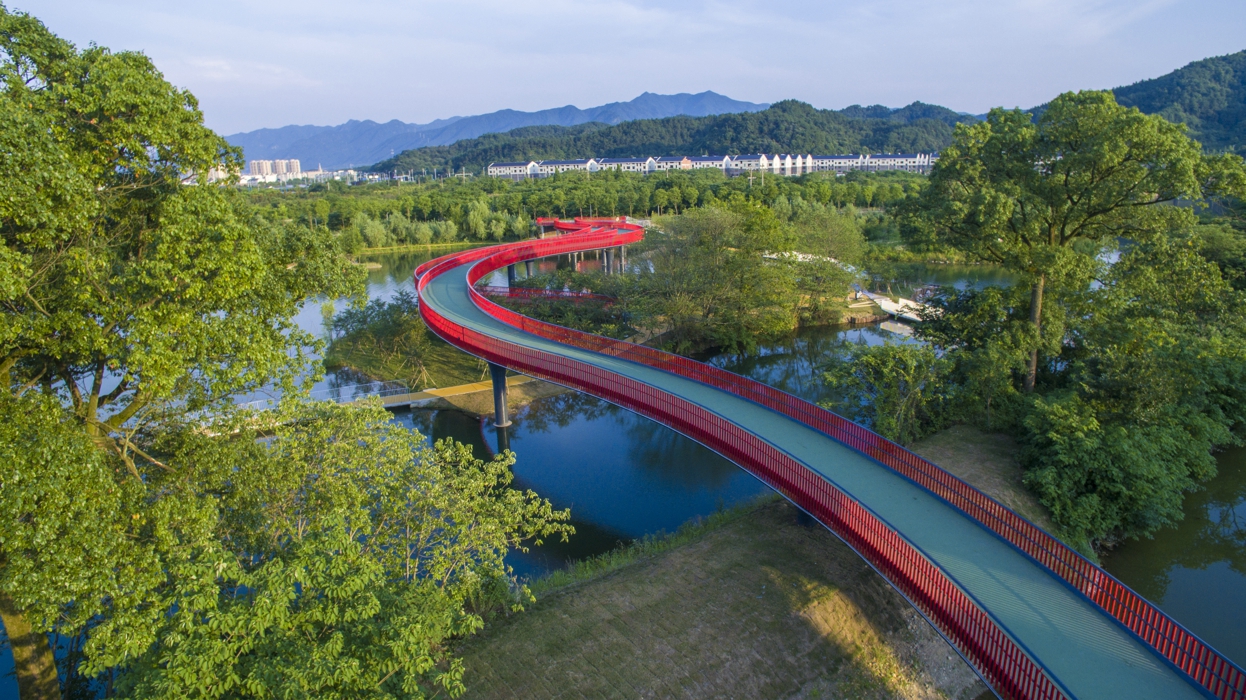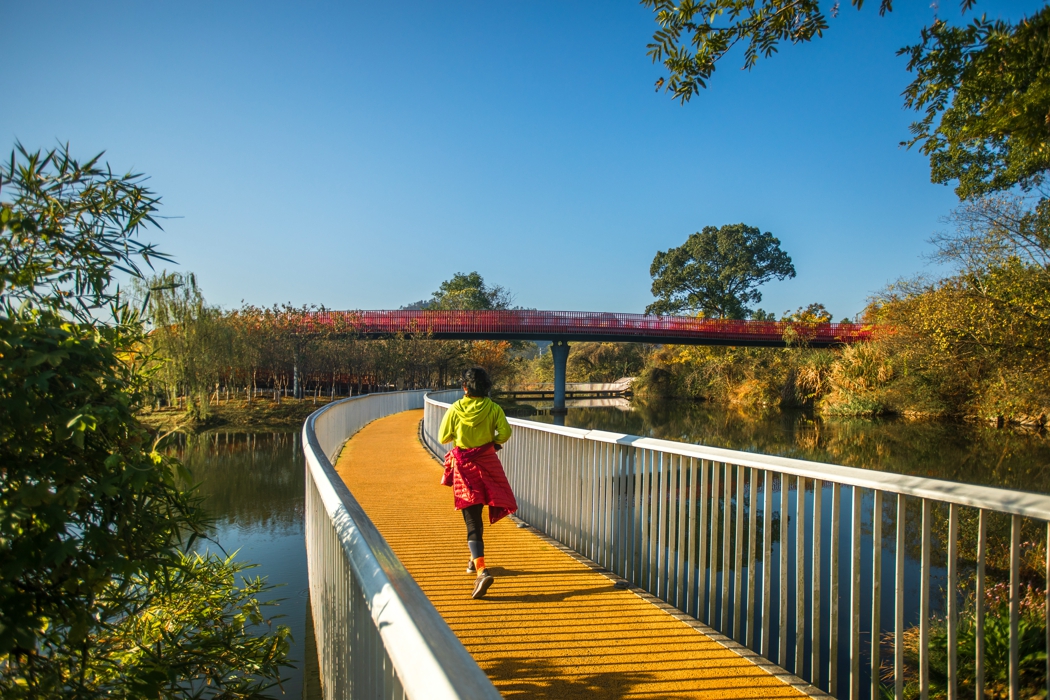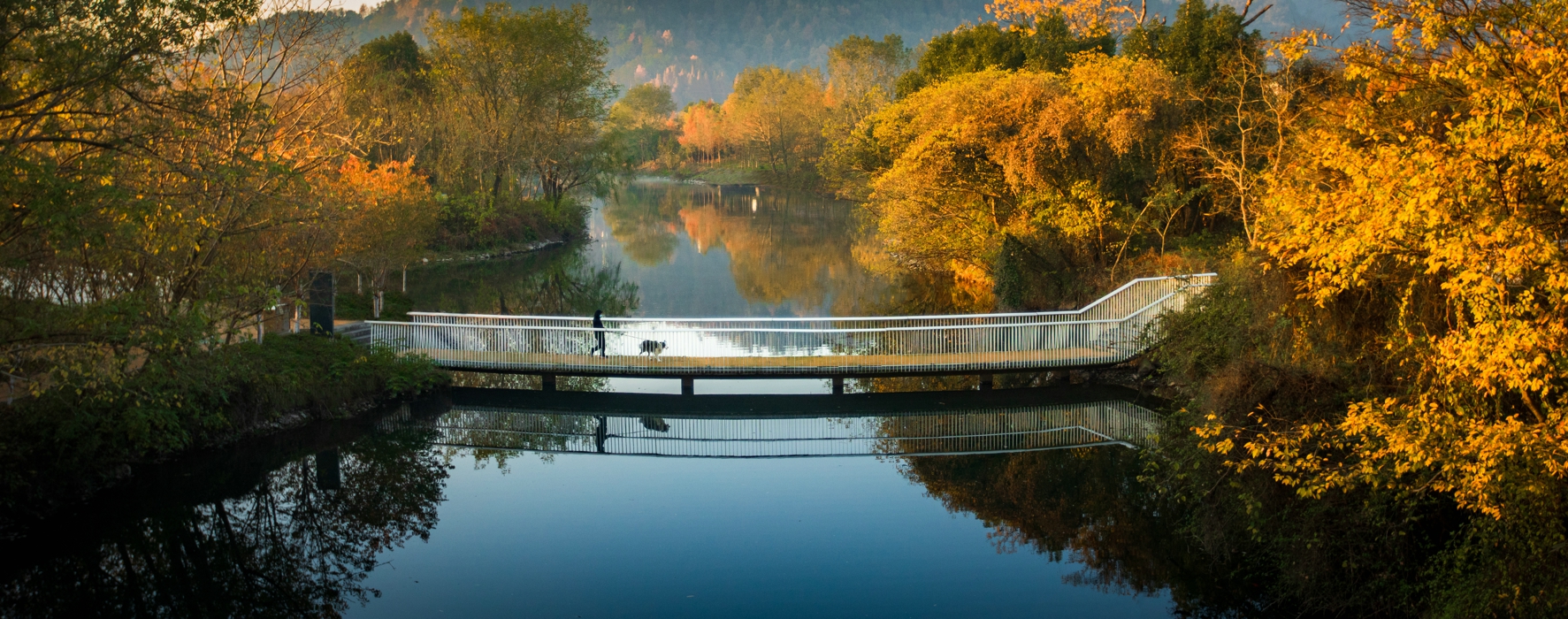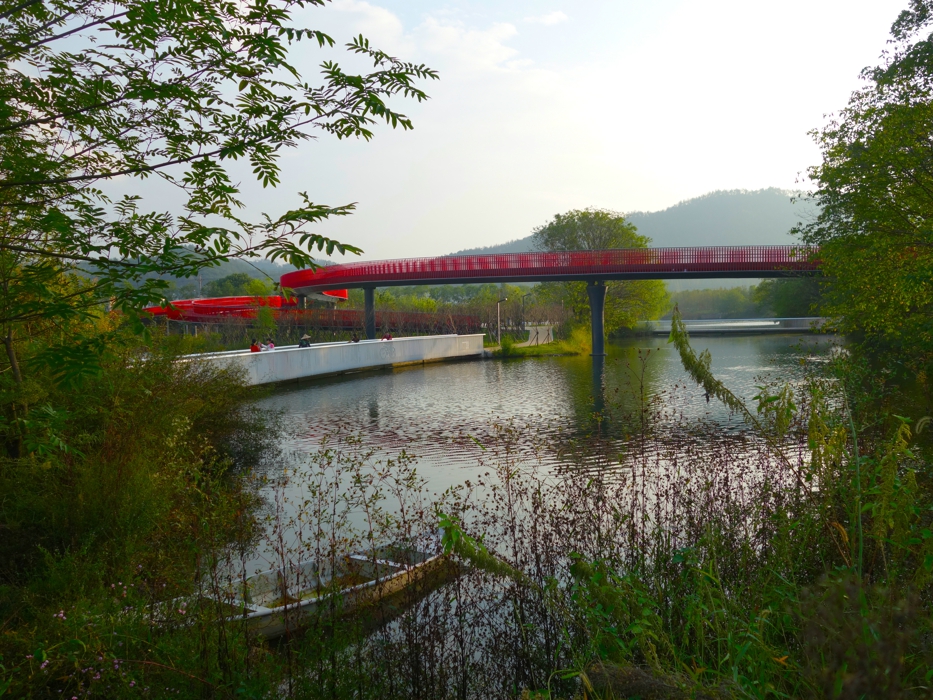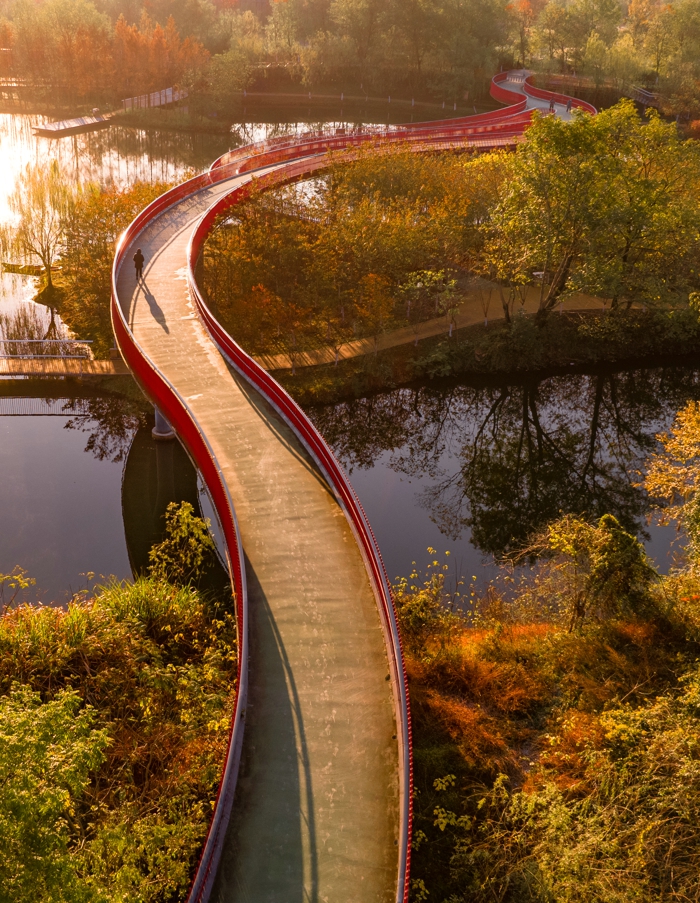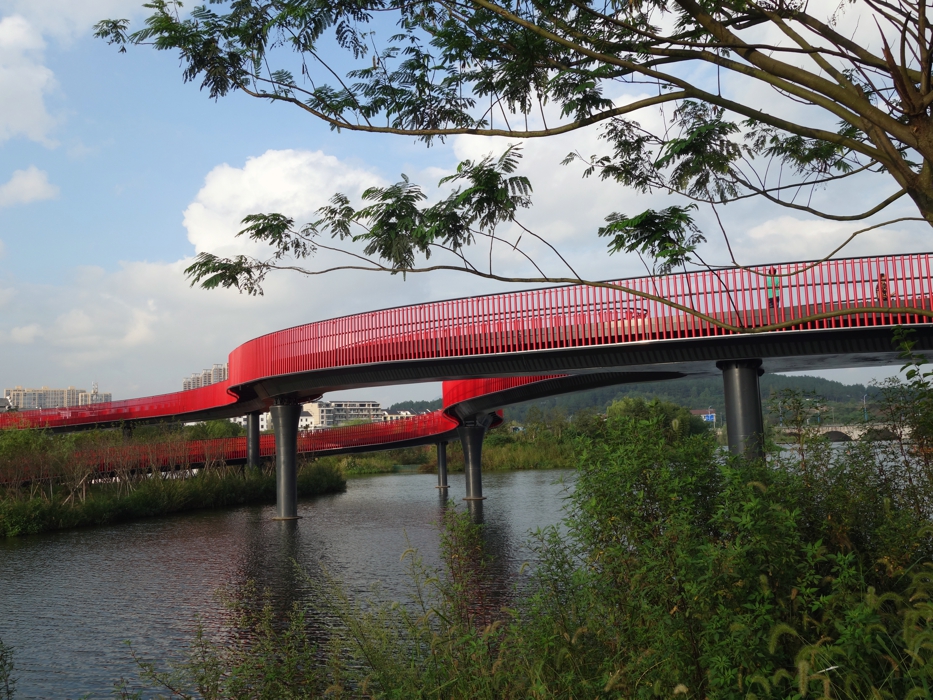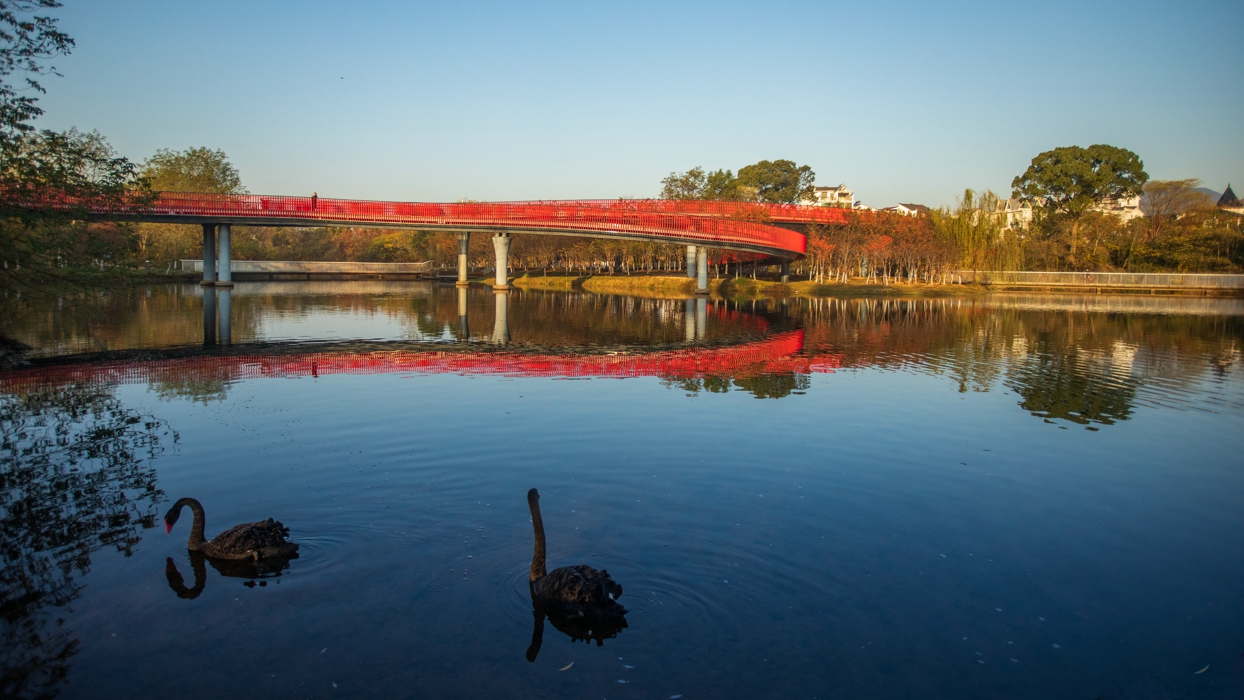Pujiang Puyang River Ecological Corridor
Project Information
- Project Location:
- China Jinhua, Zhejiang
- Project Scale:
- 635m
- Design Time:
- June 2014
- Build Time:
- December 2016
- Award List:
- 2019 International Planning Excellence Award•Ian McHarg Award for Environmental Planning, 2019 FuturArc Green Leadership
- Related Papers
Project Profile
The “Five Waters Co-governance” initiative is one of Zhejiang’s landmark environmental strategies, and it all began with the restoration of the Puyang River—the mother river of Pujiang County. This project exemplifies a minimal intervention landscape strategy, combining ecological restoration of hardened riverbanks with the adaptive reuse of agricultural water infrastructure. The result is a safe and accessible slow-traffic network that has transformed a heavily polluted river into an ecological and livable corridor beloved by local residents.
The Puyang River’s banks are lined with dense Chinese wingnut (Pterocarya) forests. A 25-kilometer cycling system runs along both sides of the river, largely utilizing existing dike-top roads to minimize damage to the native vegetation. All pedestrian boardwalks were precisely located on-site by the design team to preserve every single tree on the floodplain, creating a dynamic and immersive recreational landscape.
The site retains a wide array of historic waterworks, including 7 weirs, 8 irrigation pump houses, a gravity-fed irrigation channel, and a cross-river aqueduct—all vivid artifacts of a past era. Instead of demolishing them, the design preserves and adapts these structures, ingeniously transforming them into public recreational amenities while maintaining their original hydraulic functions. After structural safety assessments and design optimization, the old aqueduct was repurposed into a pedestrian bridge, linked with a refurbished irrigation channel carved into the mountainside, forming a continuous and distinctive water heritage corridor of approximately 1.3 kilometers. This segment exemplifies the success of low-impact design approaches. New lightweight steel frames were installed atop the existing channels, with comfortable anti-corrosion timber decking. Transparent safety railings and outward-facing viewing platforms harmonize beautifully with the towering dawn redwoods on site. The preserved weirs and pump houses, subtly modified, now serve as visual anchors in the landscape, complemented by newly designed boardwalks that echo their historic presence. Together, they compose a new vernacular landscape that reflects the region's heritage. By adopting a strategy of preservation and adaptive reuse, the design captures a sense of nostalgia while preserving historical traces of the site. It offers not only a recreational amenity, but also an environment where art, memory, and education come together in harmony.
